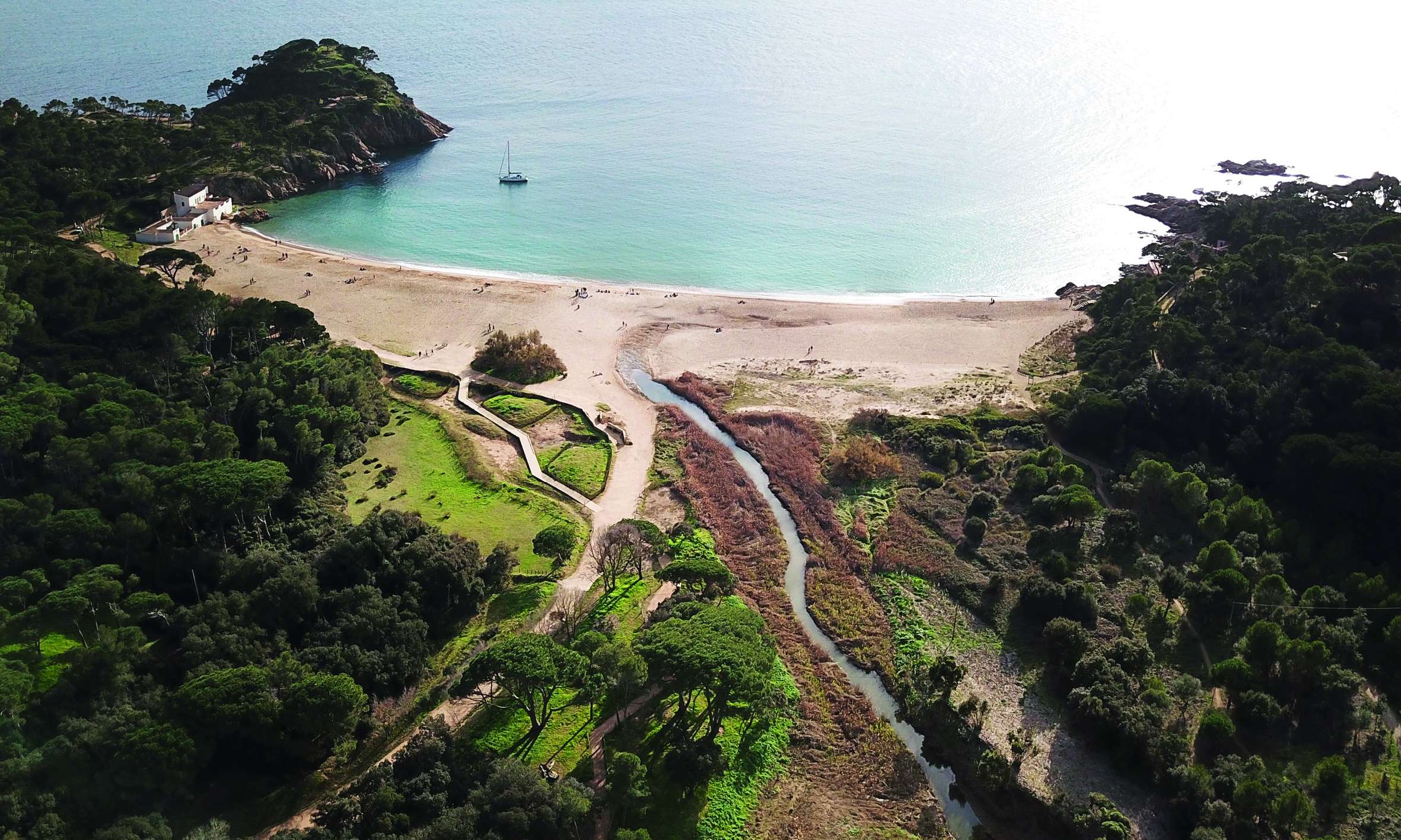
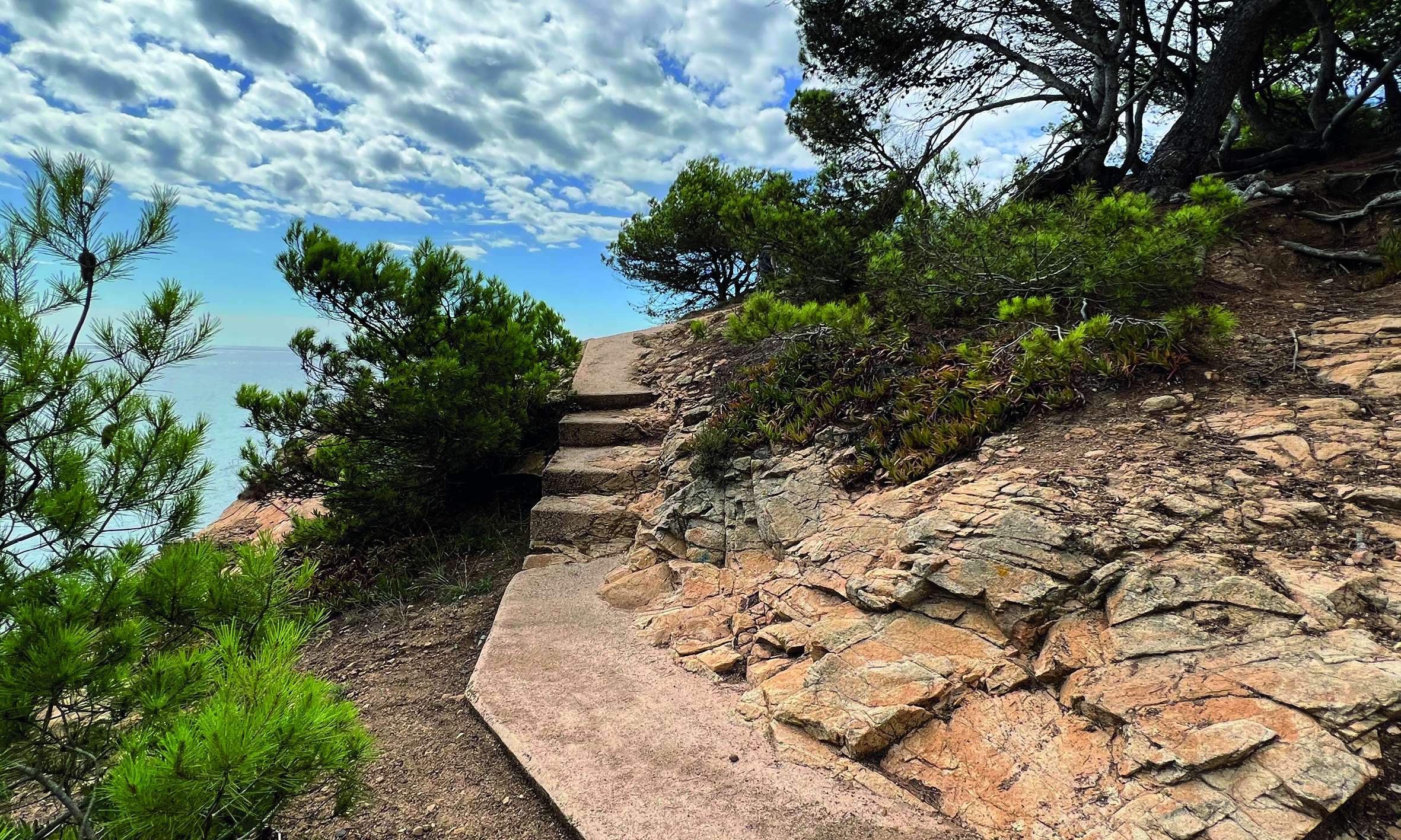
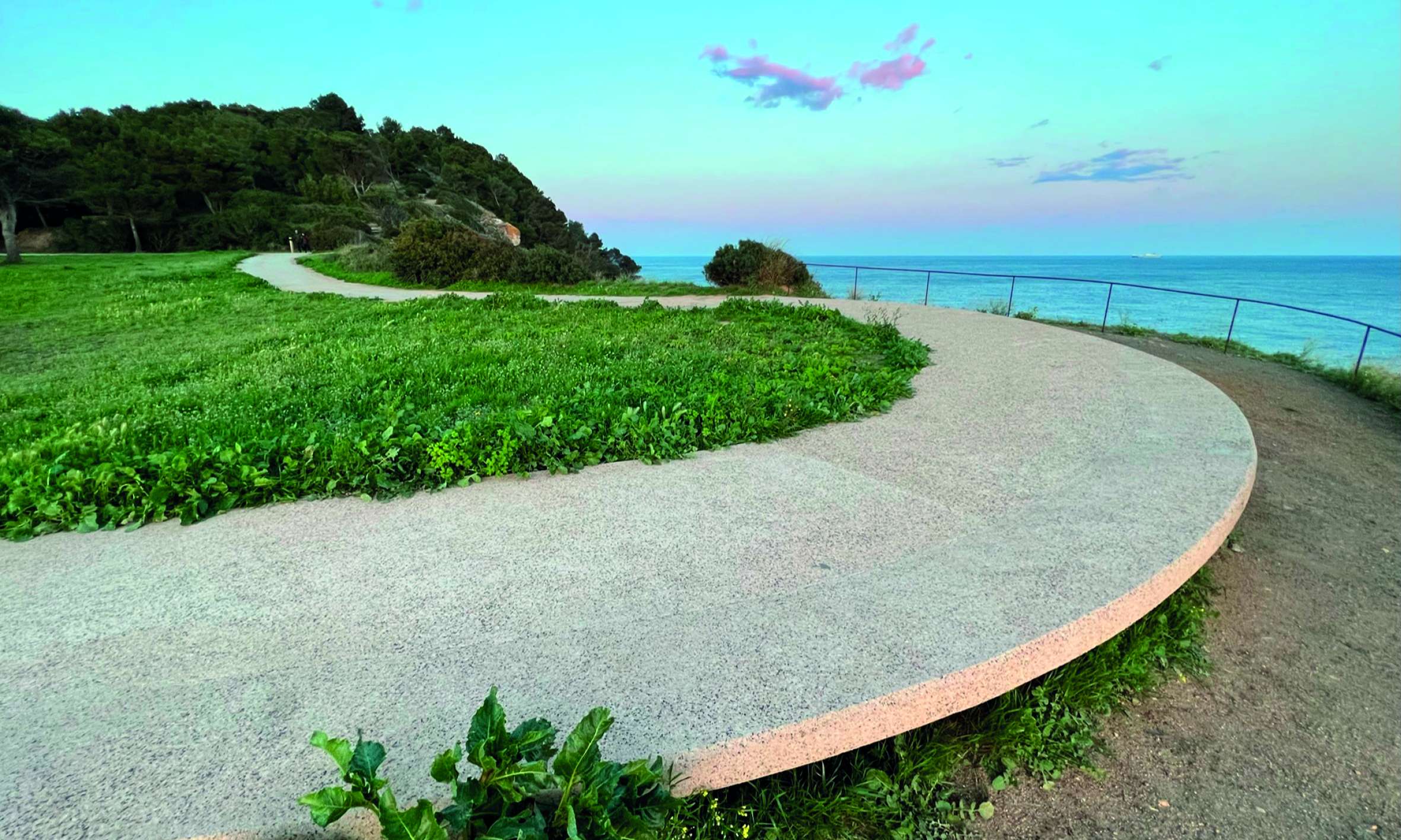
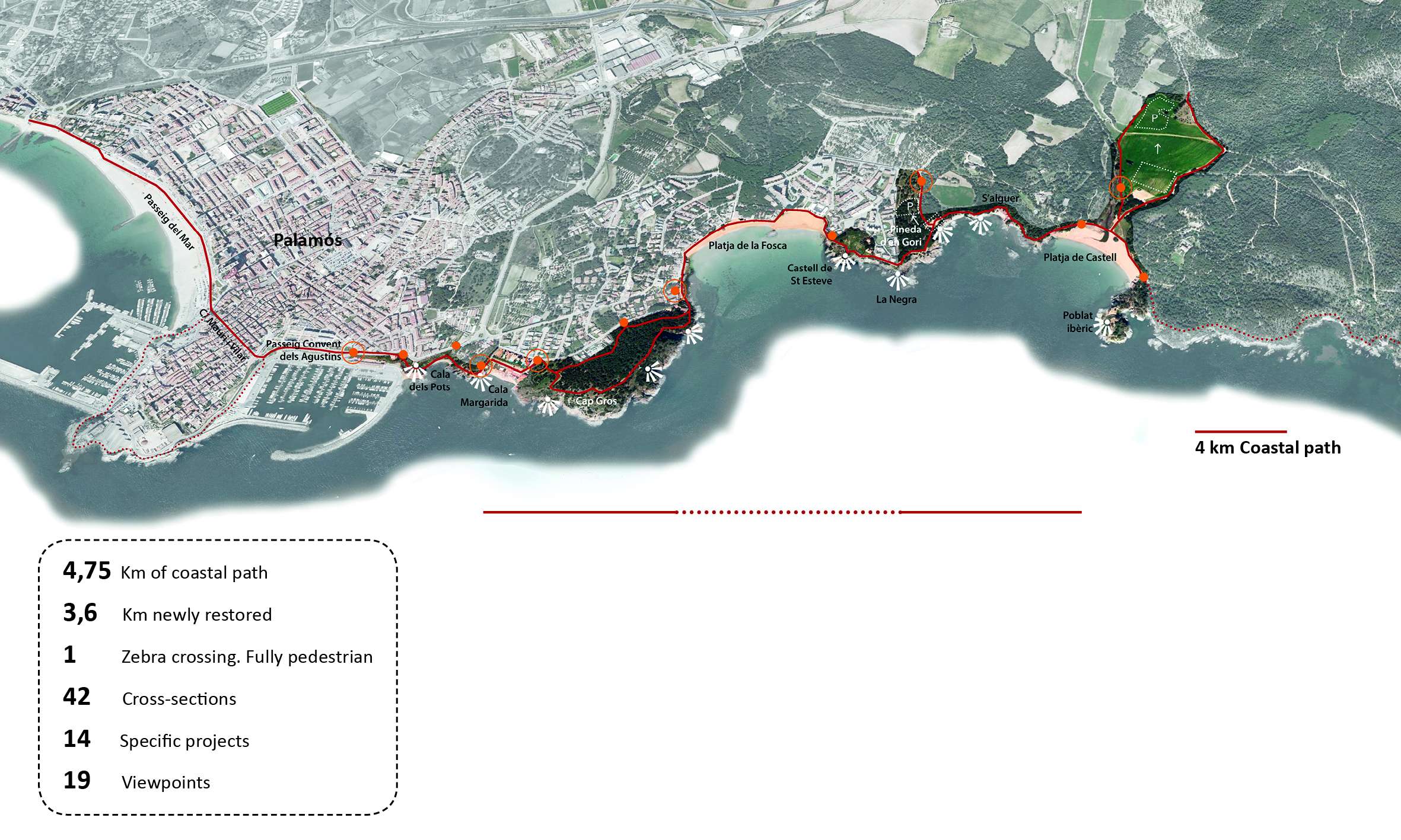

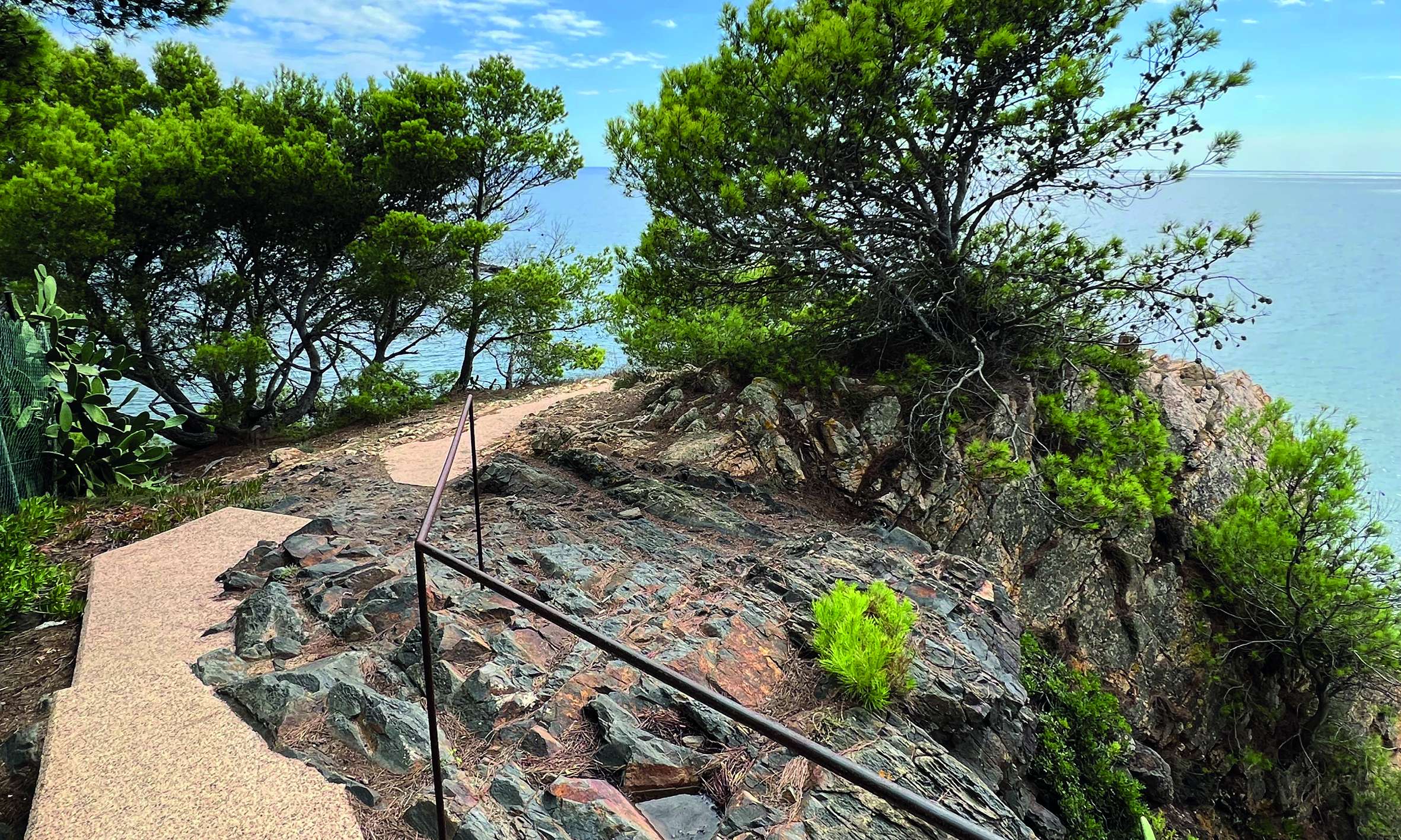


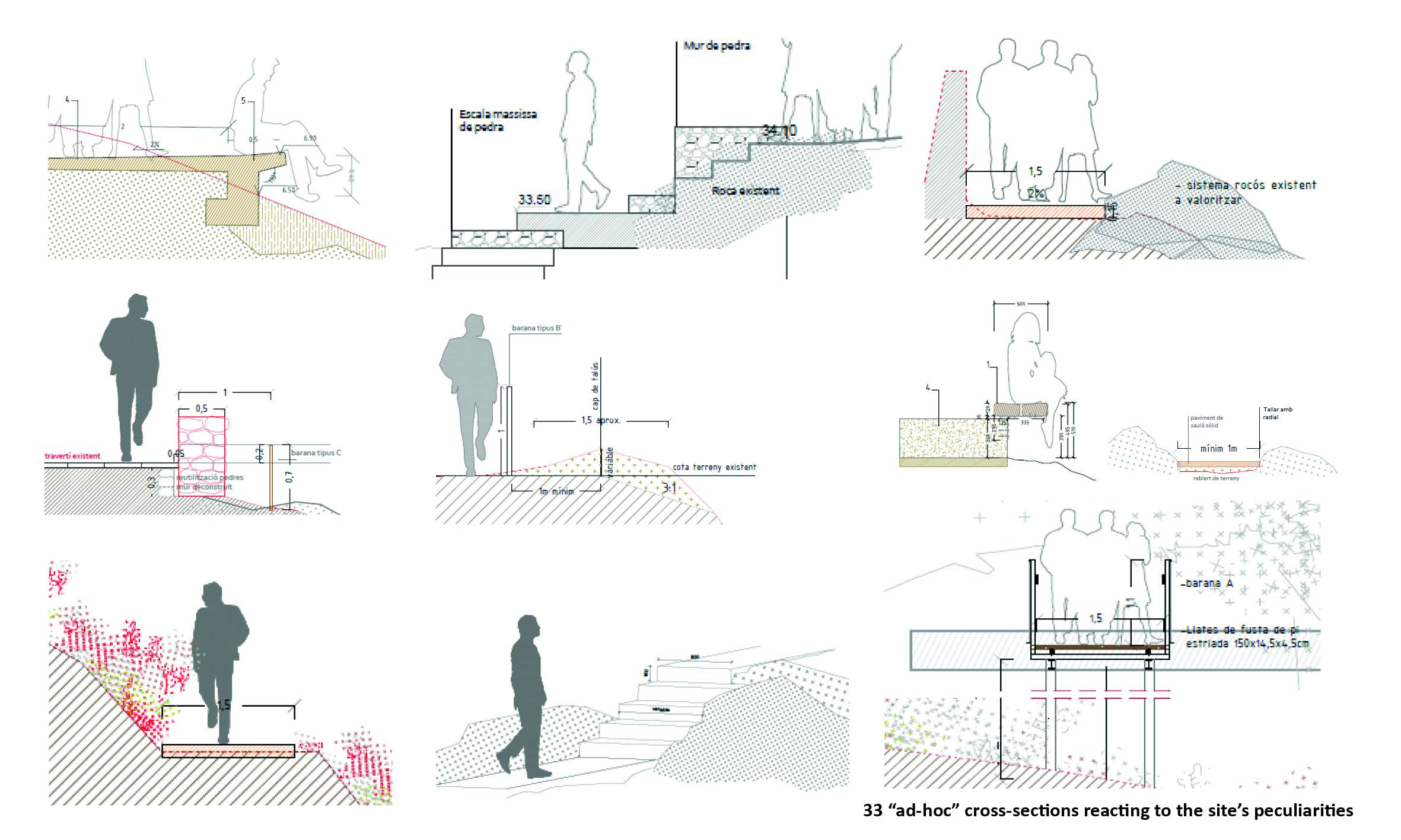
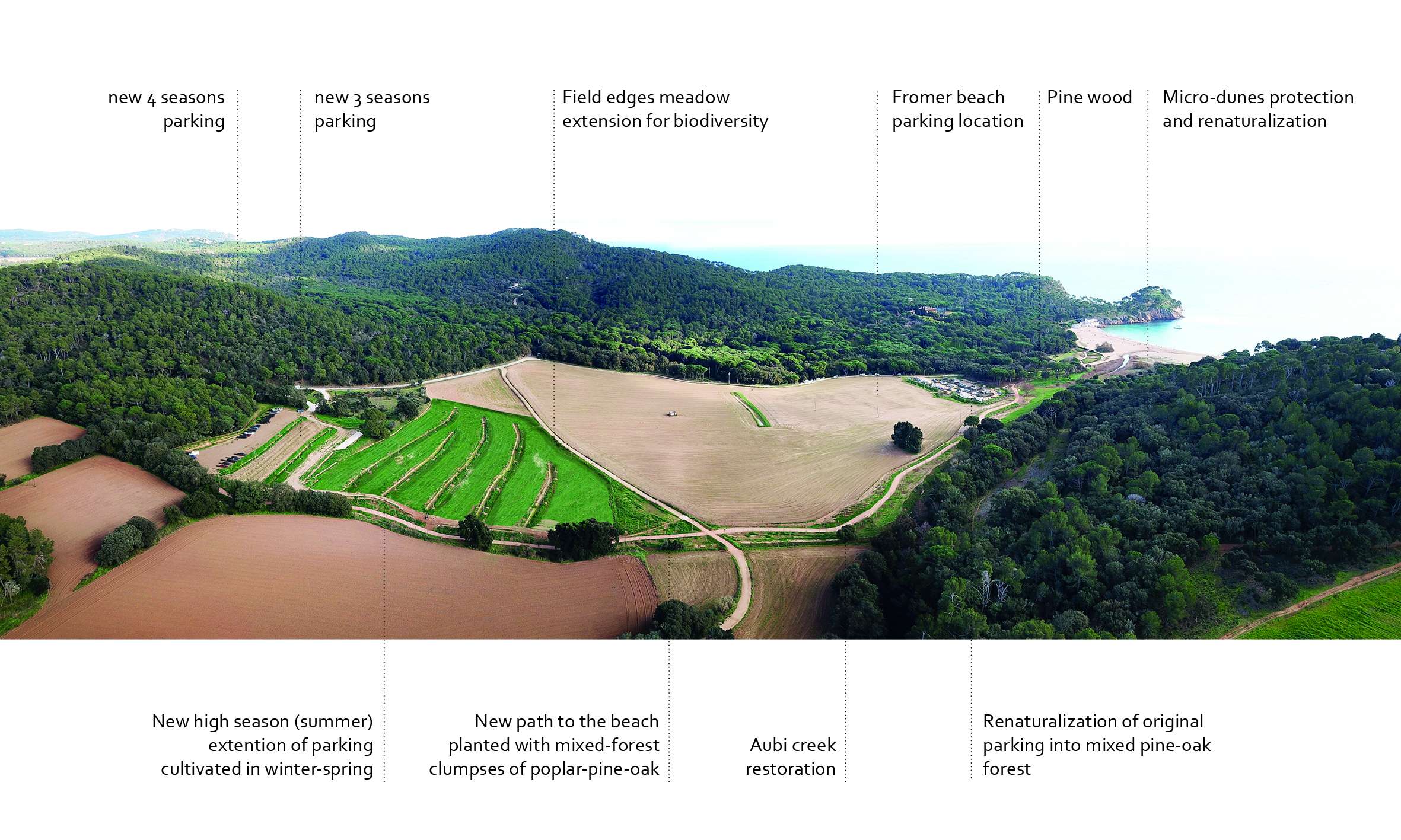
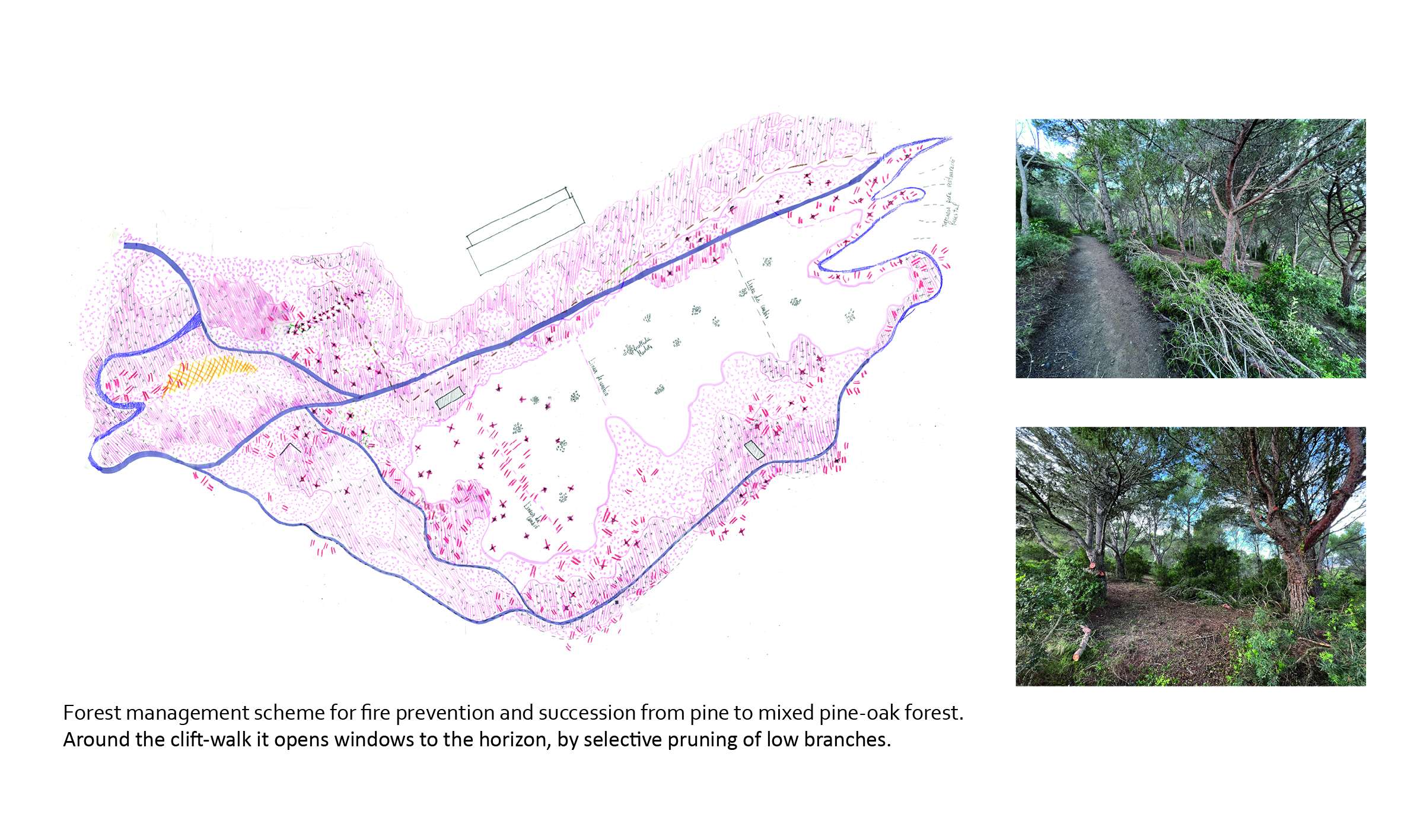
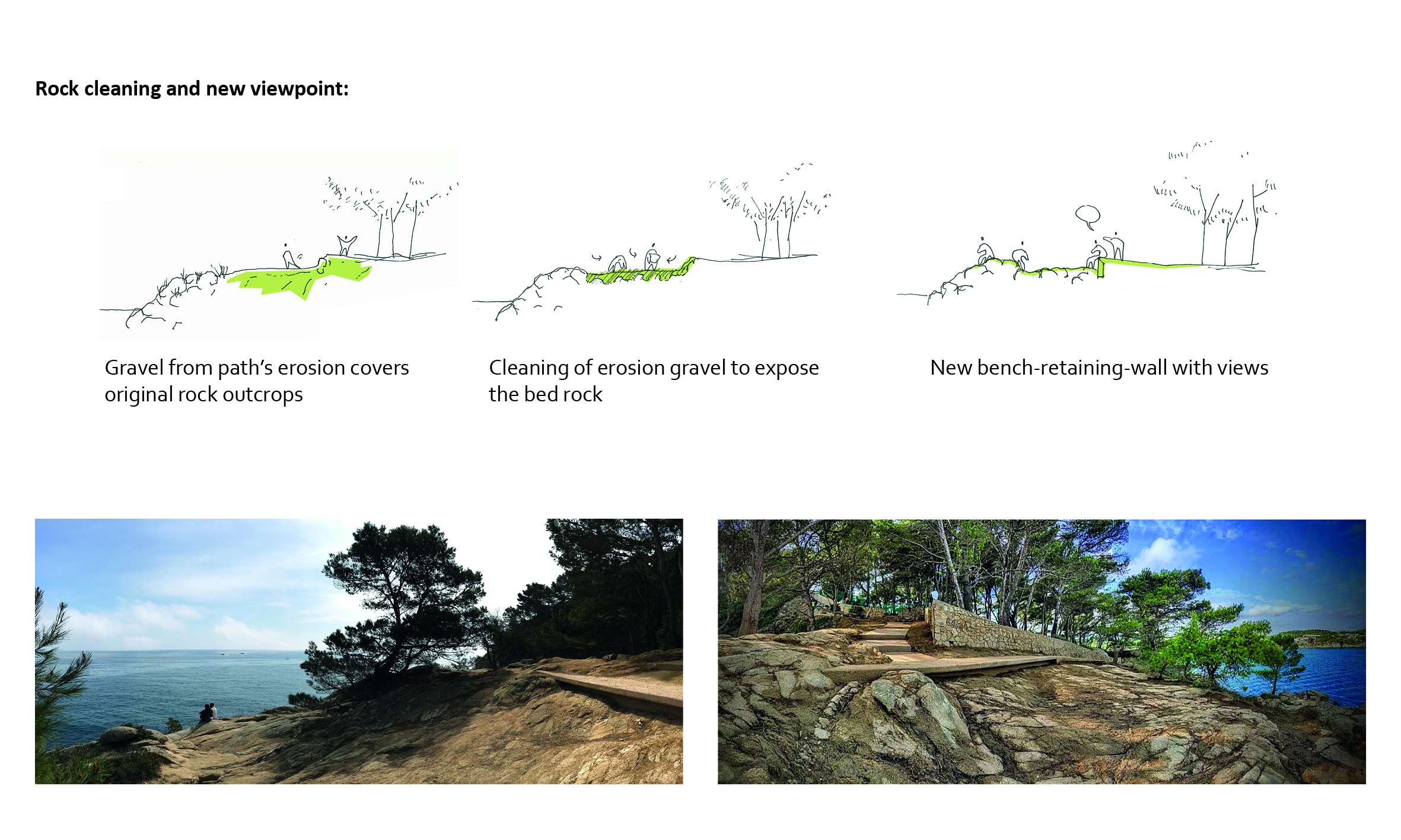
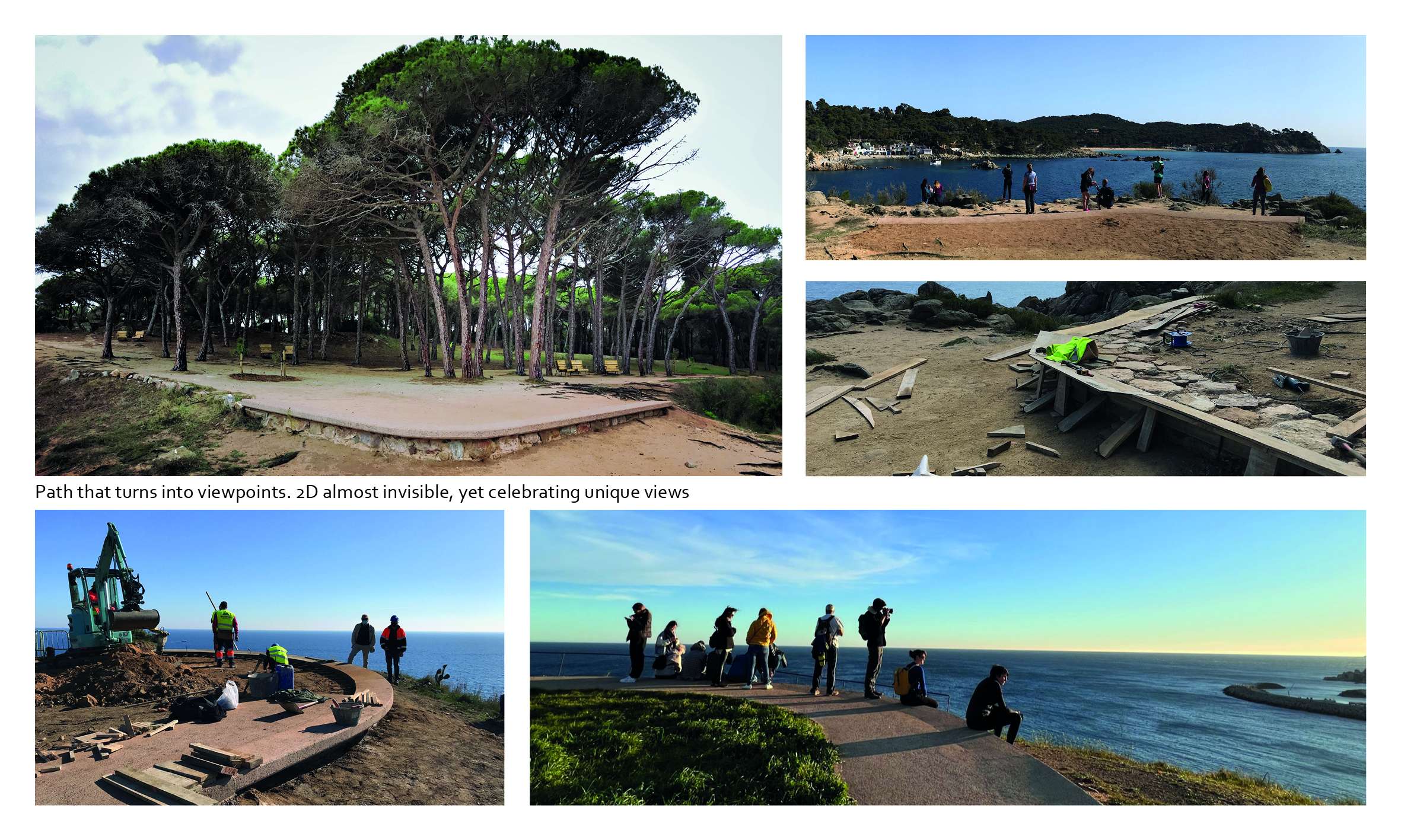

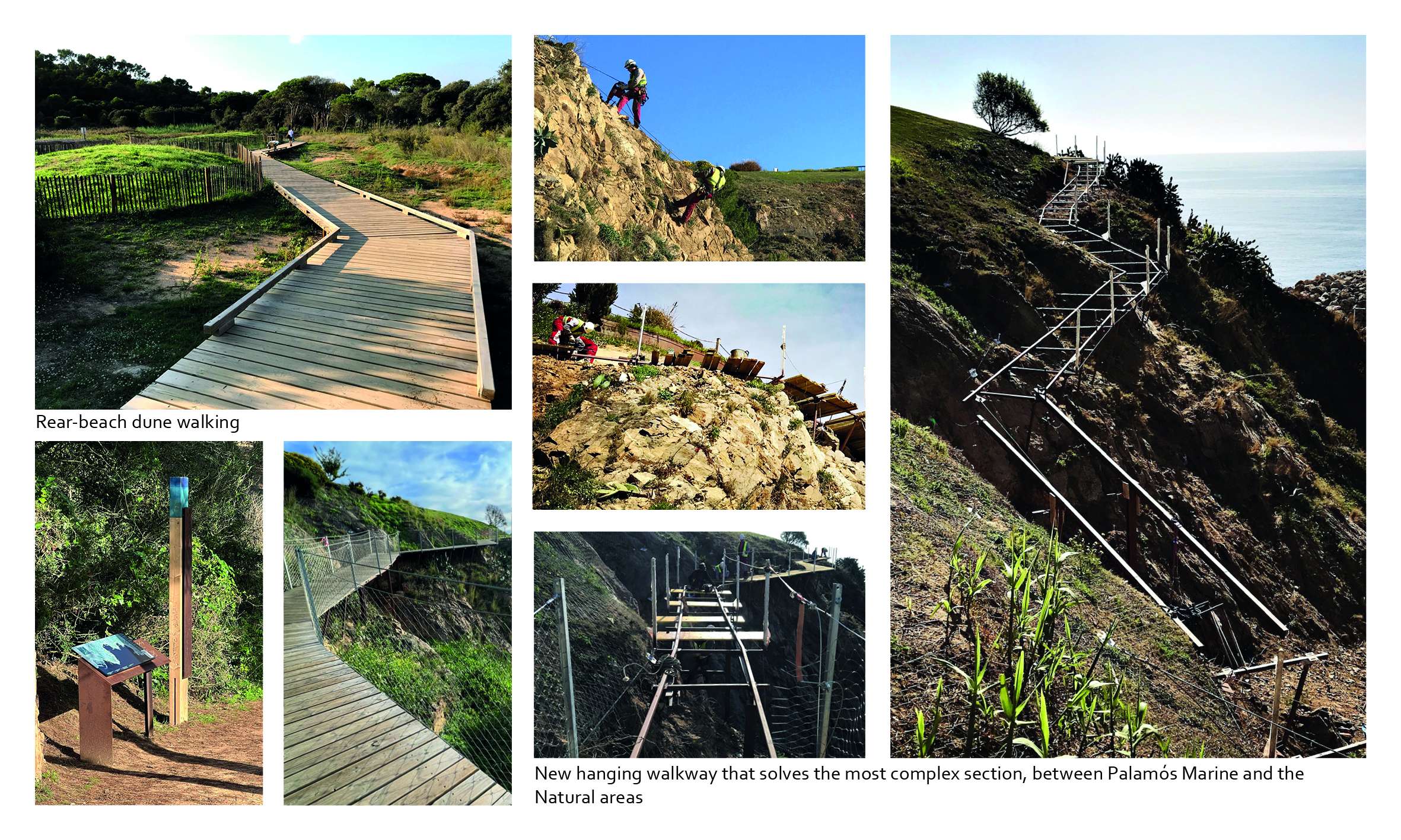
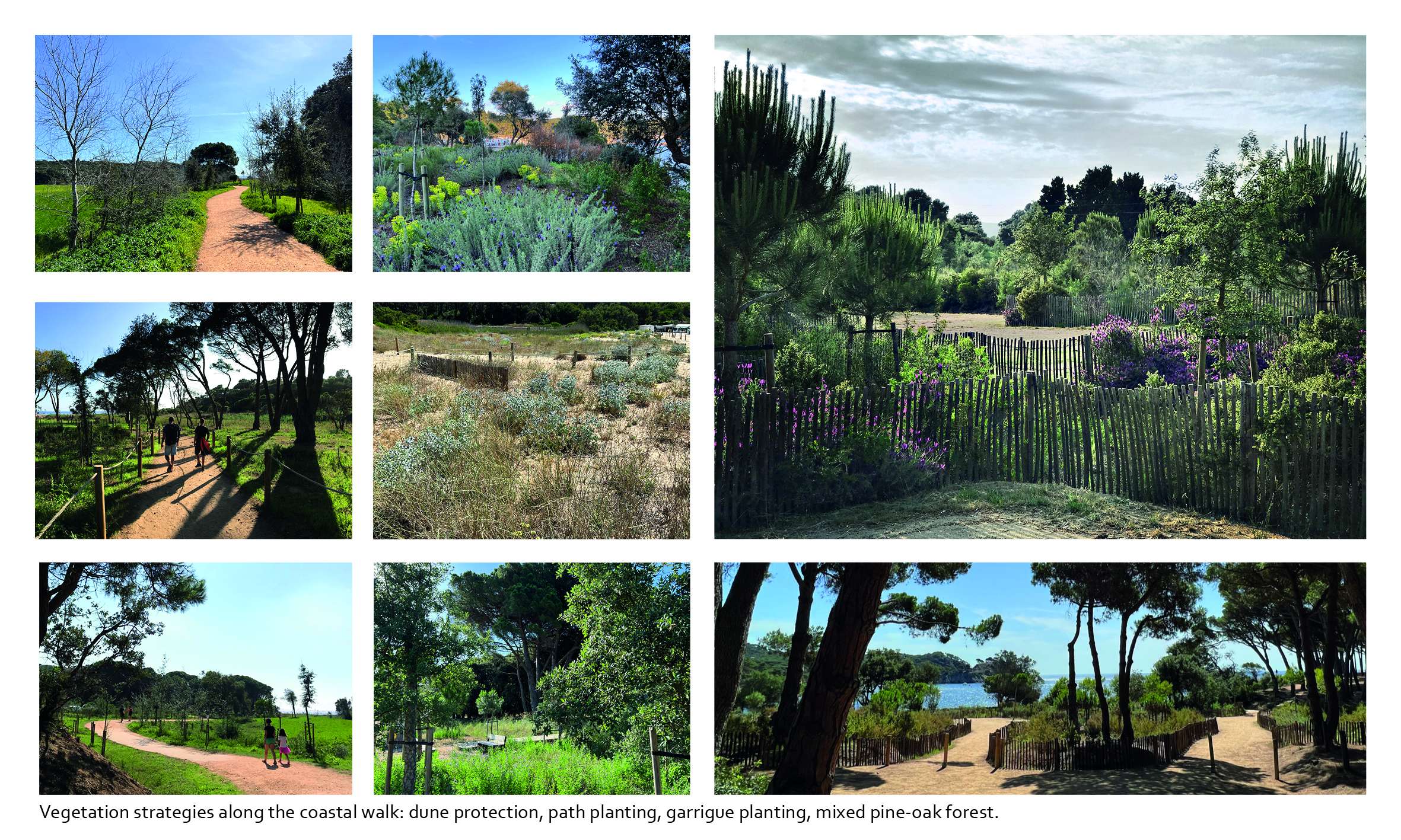
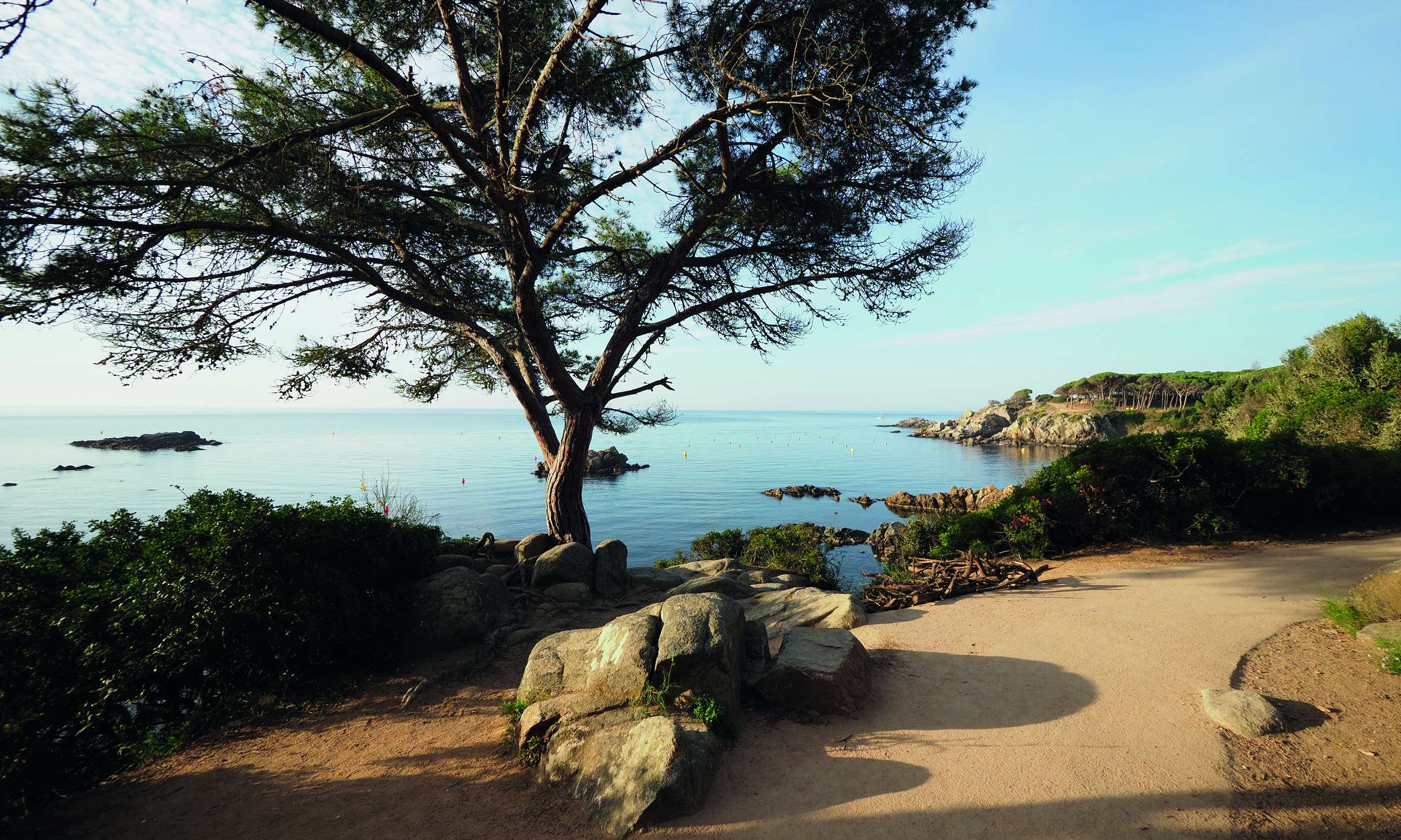

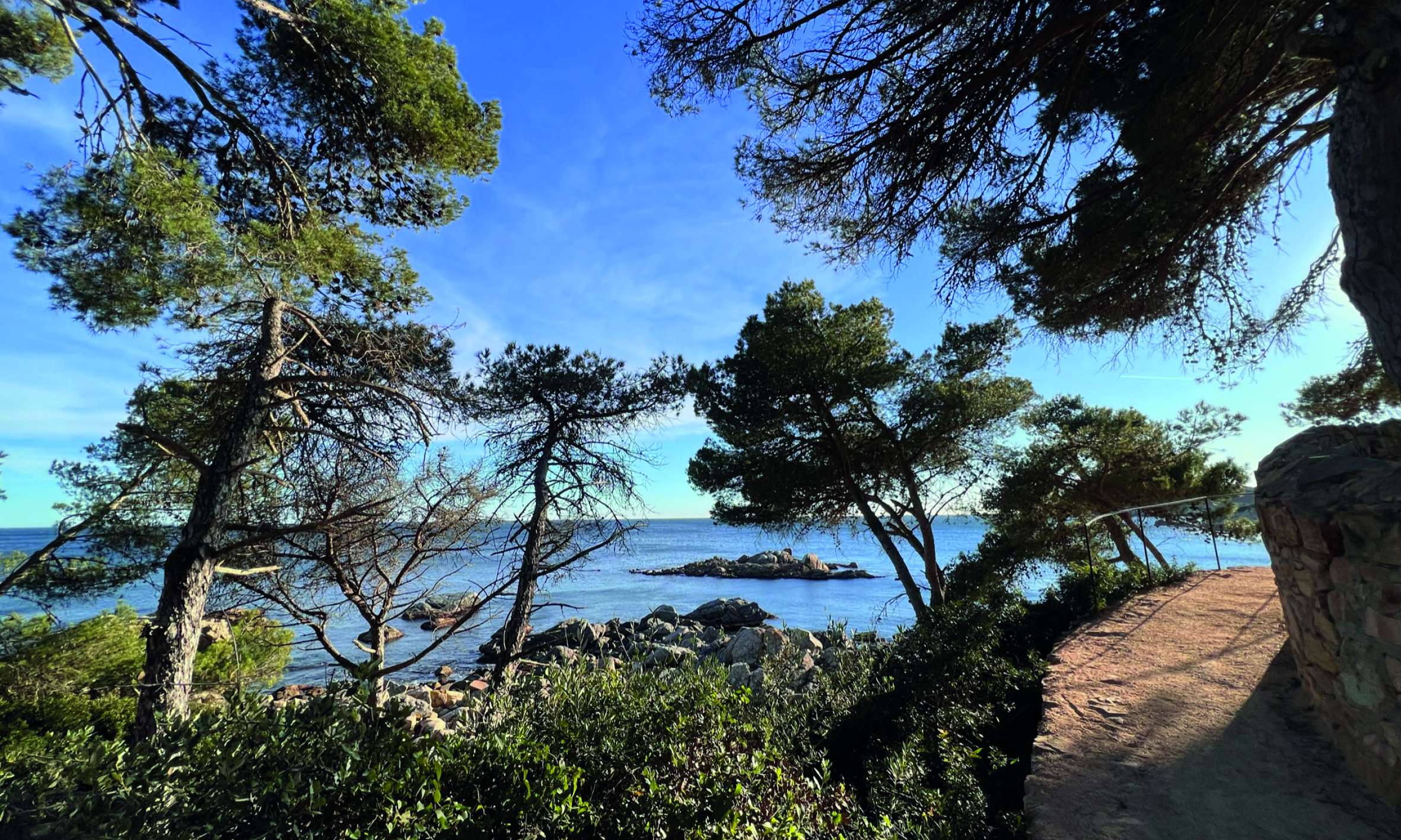
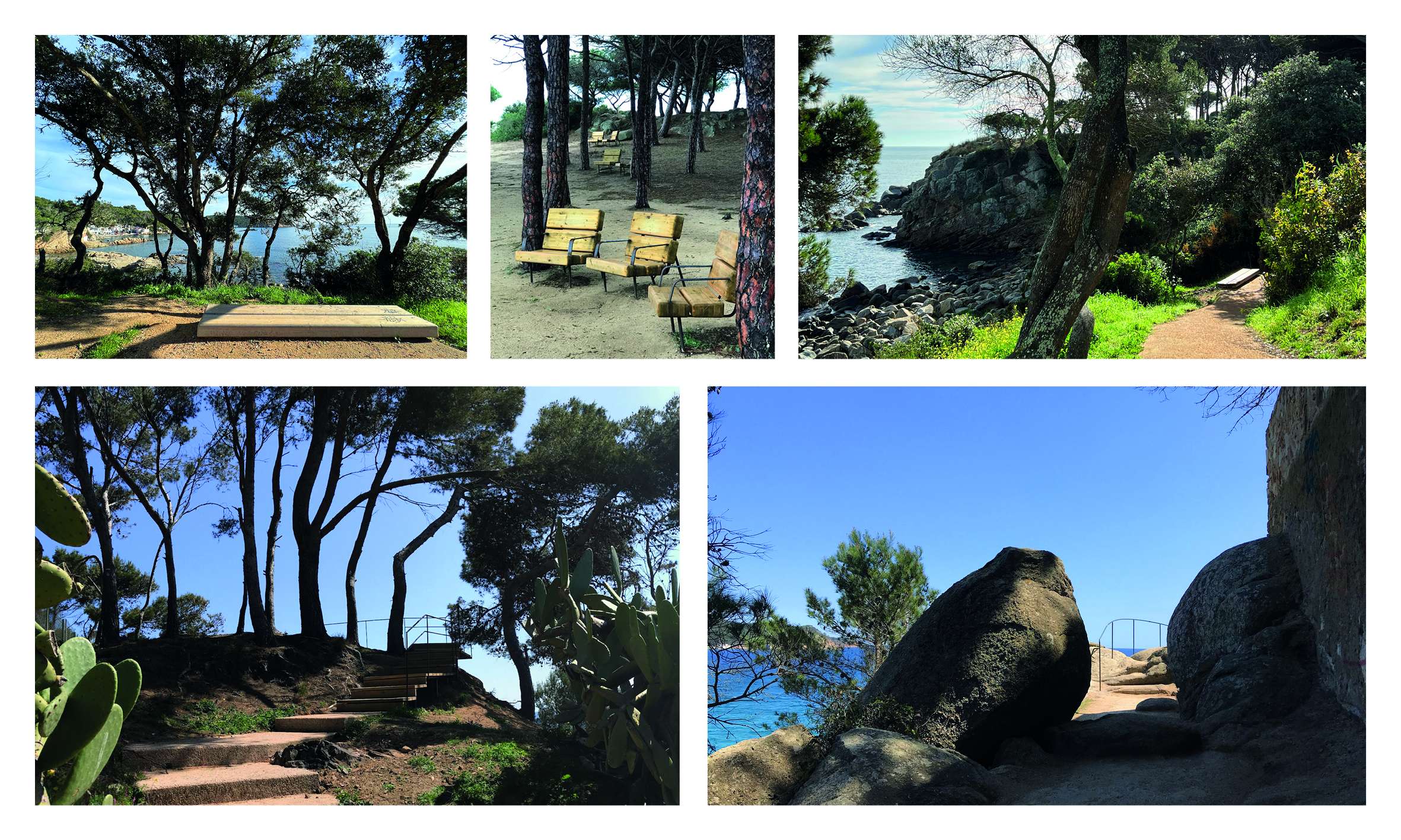
EXPERIENCIAS MEMORABLES EN UN RECORRIDO PAISAJÍSTICO ENTRE LA VILA MARINERA DE PALAMÓS Y EL PARAJE NATURAL DE CASTELL
EXPERIÈNCIES MEMORABLES EN UN RECORREGUT PAISATGÍSTIC ENTRE LA VILA MARINERA DE PALAMÓS I EL PARATGE NATURAL DE CASTELL
LANDSCAPE PATH BETWEEN THE MARITIME VILLAGE OF PALAMÓS AND RESTORATION OF THE NATURAL AREA ‘PLATJA DEL CASTELL’
Costa Brava, with almost 5 M tourists a year, is among the EU's favorite destinations. The coastal zones are facing the double pressure of climate change and massive frequentation.
Palamós to Castell Beach coastal walk is one of the most beautiful sections of the Catalan Coast. It has a unique Mediterranean mosaic of agriculture, forestry, fisherman’s huts, and discreet mid twenty S.XX urbanisation. Although the landscape is protected from urbanisation, it still suffers an important habitat degradation by its massive car and pedestrian frequentation. So the project’s goal is to extend, enhance, and preserve the coastal walk landscape mosaic for the coming decades. The key actions are:
- Make available a 4.75km restored panoramic coastal path that connects the centre of Palamós to Castell- Cap Roig Natural Park, crossing one single zebra-crossing.
- 3,6 newly open or restored pedestrian, car-free coastal-walk
- 42 site-specific cross-sections responding and celebrating each section's particularity. The path, with an average width of 1.5M, at the same time regulates fluxes and reduces ecological impact and creates a relationship of closeness, almost friction, with the landscape.
- 14 specific projects in critical areas, such as solving complex topographical connections, the restoration of former parking or the integration of new ones.
- 19 new viewpoints with very discreet interventions but extraordinary views.
- Castell’s beach car park has been displaced 500m inland and integrated into the agroforestry mosaic. The parking lot is designed by bands to allow seasonal changing capacity according to demand. 4/5 bands are farmed for forage in winter-spring and then host up to 600 cars in peak season. Castell is a paying parking, and the money collected is reinvested on the site’s management and restoration.
- Sublimate the coastal landscape with ‘ad hoc’ minimal interventions that celebrate the peculiarities of the site.
- Restore the degraded habitats into a finer, richer landscape mosaic:
- On the beach protection of herbaceous dunes communities by avoiding being run over by pedestrians.
- On rocky cliffs, extraction of invasive flora to protect the EU's rocky communities.
- On the forested hills, diversification and rejuvenation of pine forests compacted by cars
- Coastal and pedestrian into mixed forest with cork-oak with a rich Mediterranean scrub understorey. Includes car and path suppression selective cuttings and plantings.
- Through management and planting, patches of open shrubby habitats are recovered.
- In agricultural fields, widening of the edges of the fields to prompt wild meadows for pollinators and auxiliary flora and fauna.
- In urban areas, reducing the density of marine pine forests to reduce fire risk and to promote succession to bark-oak and holm-oak forests that are already growing in the understorey.
The new path is a huge success. While it welcomes a huge number of users, the landscape and nature around it is recovering, and more and more citizens are changing their habits to walk on a daily basis while enjoying the sublime landscape.
Coste por ambitos/ fases:
- Camí de ronda:
1.266.715,19€ (fondos Feder 50%)
- Espai Natural Castell:
Fase 1: 290.446,00 €
Fase 2: 232.908,91 €
